When we talk about the Middle Ages, a set of gloomy images come to mind: a time submerged in a thick fog, also a metaphor for the cultural and socio-economic doldrums of the time and for the Black Death that in Europe exterminated almost all its population.
Despite everything, in this not-so-idyllic image, another one appears, the representation of imposing castles used to protect populations from the constant invasions, plundering, and wars of conquest and reconquest of the territory, contrasting and demystifying a little the idea of cultural stagnation that always characterized this time.
In this image, although so Eurocentric, Portugal was clearly not left out, and to prove it are the many castles still there to be visited and discovered throughout the Portuguese territory.
They are also proof of this territorial development and the security of its populations, as well as, equally, the construction and identity of a people.
Some historical facts are necessary to better understand the influence of these fortifications. The Treaty of Alcanizes in 1297, signed between the kings of the two kingdoms, until then enemies, defined the borders of the kingdom of Portugal.
However, until then, these castles were crucial in the defense of the Portuguese territory from north to south. Still, it is necessary to go back to before the foundation of the kingdom of Portugal, to understand that in the 9th century, the territory witnessed a constant fight between Christians and Muslims in the historical process of the reconquest.
This process led to a reconfiguration of the Christian monarchs who tried to reorganize themselves to recover the lost territories. Amid all this chaos, castles were born out of a need for protection and became one of the armies’ most significant allies in defending the territory.
Once the expeditions against the Muslims were over, it was now a matter of delimiting the borders between the various Christian kingdoms.
The castle tradition was kept up, building a new one under something older or sometimes making everything from scratch to defend Portuguese territory against the enemy kingdoms of Leon and Castile.
Among the various castles erected in the Middle Ages, we have selected castles in the Interior of Portugal that, being a short distance from each other, can be visited during a weekend. Take a look at 5 castles to discover in Portugal’s interior below.
1. Penedono Castle
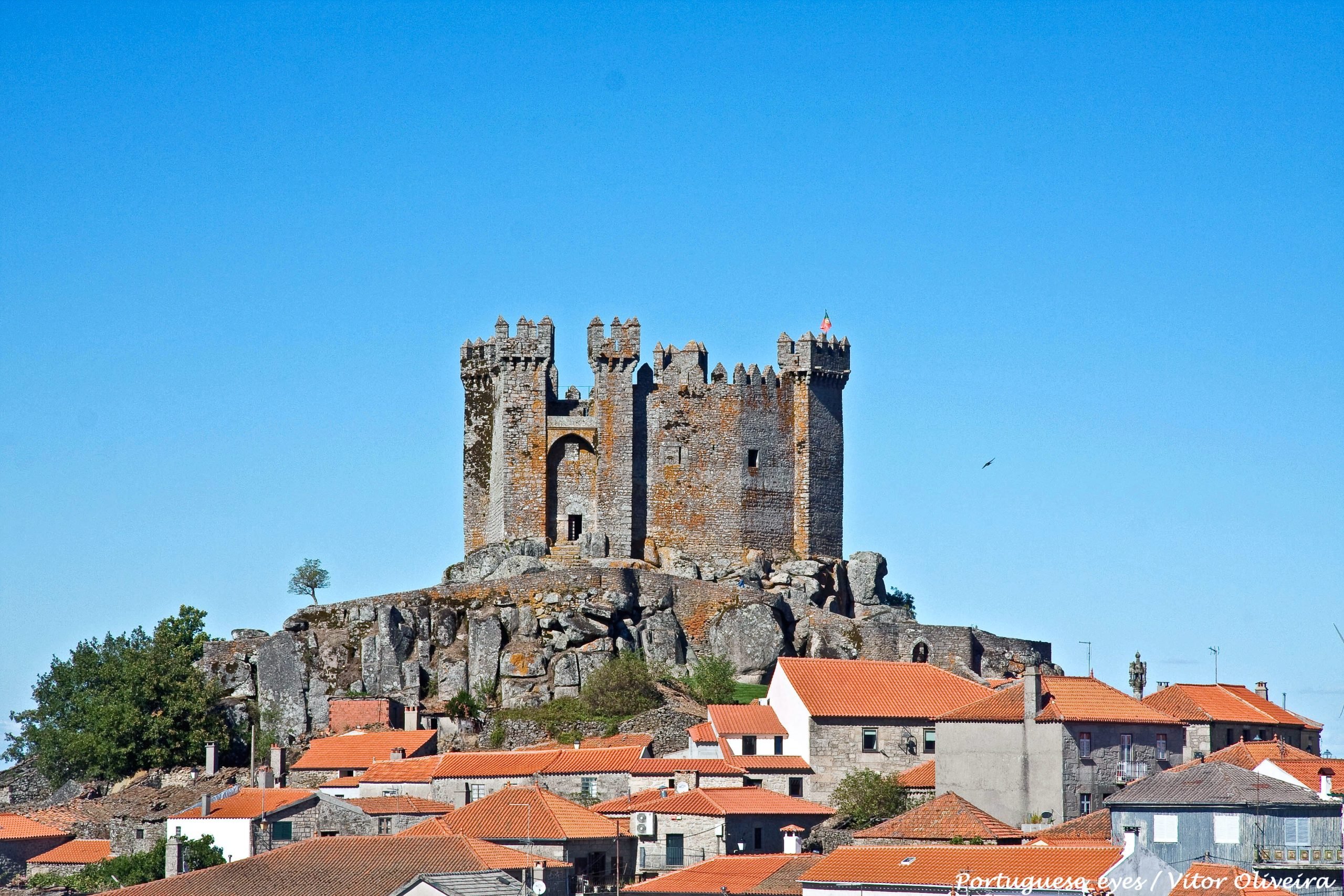
When we are in front of this castle, we barely realize that we are facing more than a thousand years of history. A story that begins to be told even before the foundation of the Kingdom of Portugal.
The castle that the traveler has in front of them will have been a very simple structure erected in the tenth century for hundreds of years. But this primitive and simple structure will not have resisted the invasions of Almançor, a military and political man from Alandalus linked to the Muslim invasion of the Iberian Peninsula started in the 8th century.
Later, still under the government of Leon, Ferdinand I the Great would undertake its renovation. And already in times of the Kingdom of Portugal, the settlement of Penedono in 1195 was stimulated by Dom Sancho I, the second king of Portugal and whose nickname, The Settler, did him justice.
Later, in 1373, King Fernando donated the castle to Vasco Fernandes Coutinho, who became its mayor. His descendants would make the changes we can see during the visit.
During the Ferdinandine wars (1369-1382), the alcaide of Penedono fought alongside the master of Avis in the battle of Trancoso, which would open the doors to victory in the Battle of Aljubarrota (1385). In the 15th and early 16th centuries, the space was totally reformulated to be adapted to a manor house.
With so many reformulations throughout the centuries, it can be said that Penedono Castle as we see it today originated in the 13th century. It is classified as a national monument and temporarily closed for restoration work.
Still, it is worth the trip to Penedono to see this beautiful fortification and village where other monuments can also be visited.
This includes the Mother Church of Penedono (late 17th century), Menir of Penedono, the Megalithic Necropolis of Lameira de Cima in Antas, the pillory in front of Penedono’s Castle, as well as secular churches and chapels of the village.
Visiting hours: Penedono Castle, closed temporarily for restoration.
2. Trancoso’s Castle
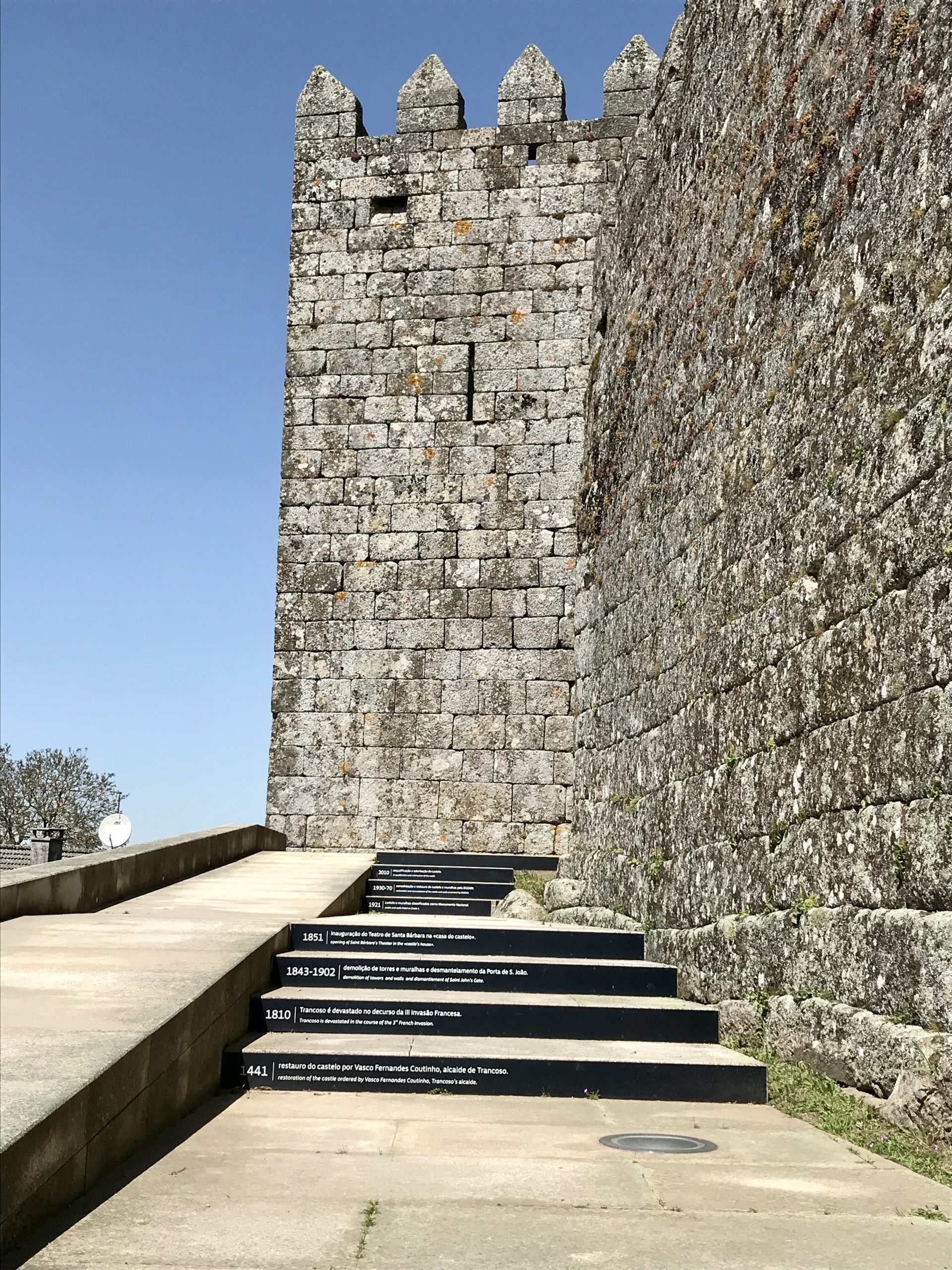
It is quite curious to see that when we speak of the Portuguese Middle Ages, several feminine voices stand out. From Mumadona Dias – the most powerful woman in the northwest Iberian Peninsula (10th century), responsible for building the wall and the Castle of Guimarães – to her niece Dona Flâmula Rodrigues who donated in her will ten fortifications to the monastery of Guimarães.
Among them, in the tenth century, the Castle of Trancoso appears as one of the most impressive.
It is curious to see how a woman in the middle of the Middle Ages owned such an impressive set of fortifications, namely Trancoso and Penedono.
But it is the one in Trancoso that stands out the most, with its keep dating from the 10th century, which later originated the rest of the castle, suffering subsequent reforms in the 12th and 13th centuries.
As were the others, this tower served to watch over and control the territory of Trancoso. However, this fortification also did not resist the same Almançor invasions that also occurred in Penedono.
By the end of the 10th century, the Muslim flag was raised on its tower. With a shared history, also here, King Fernando the Great of Leon, during the military campaign of 1055, recovered the castle by handing it over to its previous owners, the Monastery of Guimarães.
From that time on, in the 12th century, even before the foundation of Portugal, the construction of the wall began. This would be reinforced by king D. Dinis (who reigned between 1279 and 1325), who ordered the addition of seven walled towers.
This wall was restored in 1173, 1282, 1530, and more recently in 1940, during the Estado Novo regime during the Portuguese World Exhibition.
Visiting hours:
From June 1 to September 30, Monday to Friday, from 9:30 am to 12:30 pm and 2:00 pm to 6:00 pm. Saturdays, Sundays, and holidays, 9:30 am to 1:00 pm and 3:00 pm to 6:30 pm.
From October 1 to May 31, weekdays are from 9:00 am to 12:30 pm and from 2:00 pm to 5:30 pm. Saturdays, Sundays, and holidays from 9:00 am to 12:30 pm and from 2:00 pm to 5:30 pm.
Closed Easter Sunday, May 1, November 1, December 24th and 25th, December 31, and January 1.
Price: Free entrance
3. Castelo Rodrigo’s Castle
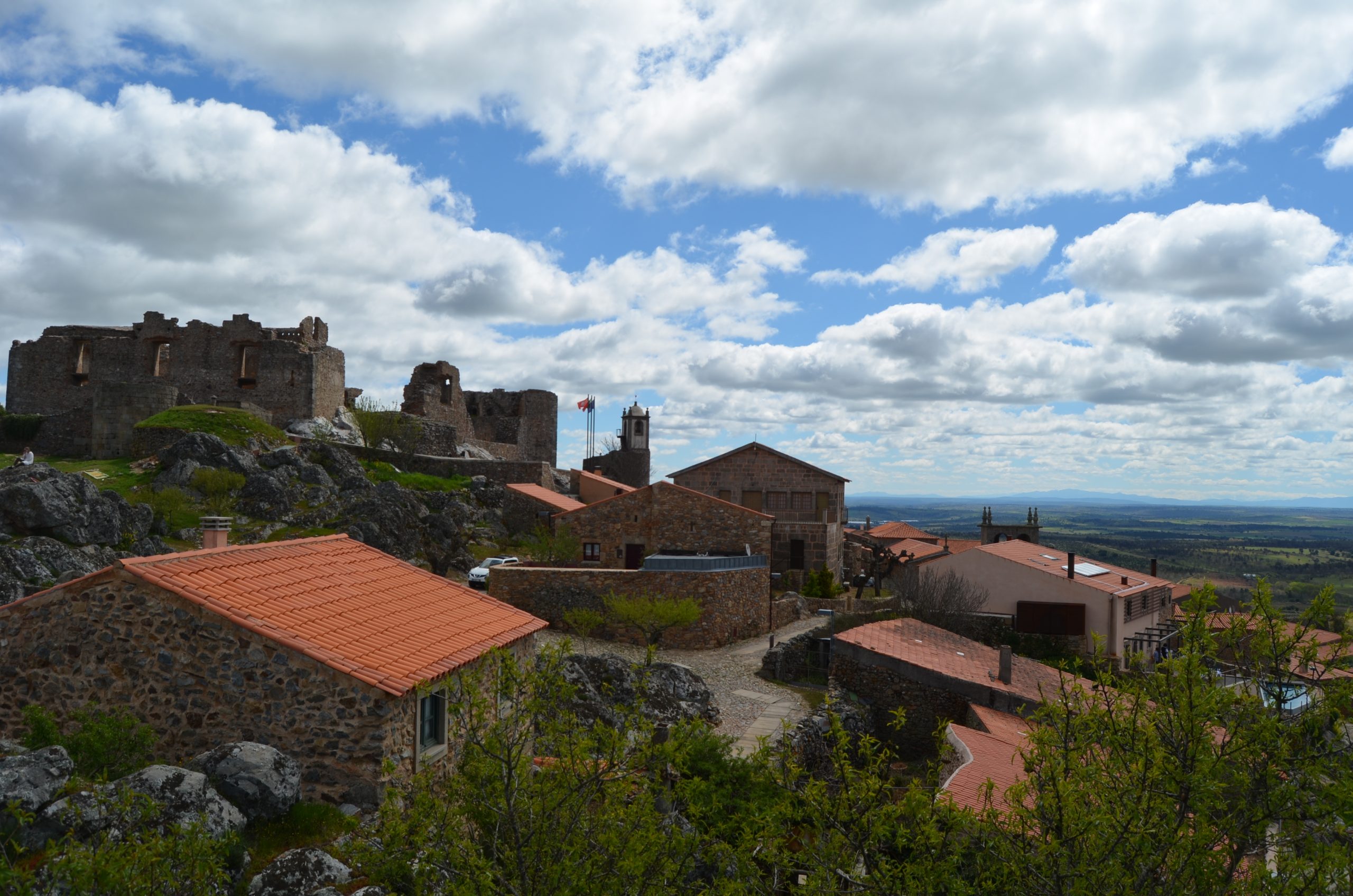
A few meters from the border with Spain, we find a historic village, once surrounded by medieval walls that, like so many, served to protect its inhabitants from constant barbarian offensives.
Right next to the border, the dispute for this little land lasted more than 130 years. On the one hand, the king of Leon created a defensive line on the right bank of the Côa River, where the castle was integrated, and the name of this village will be related to the name of a count called Rodrigo I, that governed the city between the 11th and 12th century.
The castle, of which few ruins now remain, will have had its foundation in a hill that also belonged to Flâmula Rodrigues. In 1209, Afonso 4º, King of León, promulgated the first charter of Castelo Rodrigo, intending to turn the town into a fortress of the kingdom to prevent the invasive actions of the Portuguese.
At the beginning of the reign of Portugal, the castle underwent several changes, the biggest ones made by D. Dinis, who rebuilt the keep and reinforced the protected fence with multiple turrets.
This castle was also a significant part of Portugal’s history, particularly between 1383-1385, during the dynastic crisis. However, the connections of this land with Castelo made it refuse to receive D. João I as king of Portugal in 1396.
Only a year later, this small fief would be solved, and the doors opened to the master of Avis. During the reign of D. Sebastião, in the 16th century, the castle was donated to a count, Cristóvão de Moura, in the service of Filipe II of Spain.
It would undergo a series of transformations by introducing a sumptuous palace. The restoration of independence in 1640, after 60 years under the rule of the Philippine dynasty, would greatly influence the friendship between the count and the Spanish king.
At war with the count, the mob went to the castle and burned down the palace, explaining the ruins we can see today. And even though the new king of the fourth and last Portuguese dynasty paid attention to renovating the walls, the palace was never recovered.
Visiting hours: October 1 through February 28, 9 am to 12:30 pm and 2 pm to 5:30 pm; March 1 through September 30, 9:30 am to 1 pm and 2:30 pm to 6 pm. Closed December 24 and 25, January and Easter Sunday.
Price: 1 Euro
4. Belmonte Castle
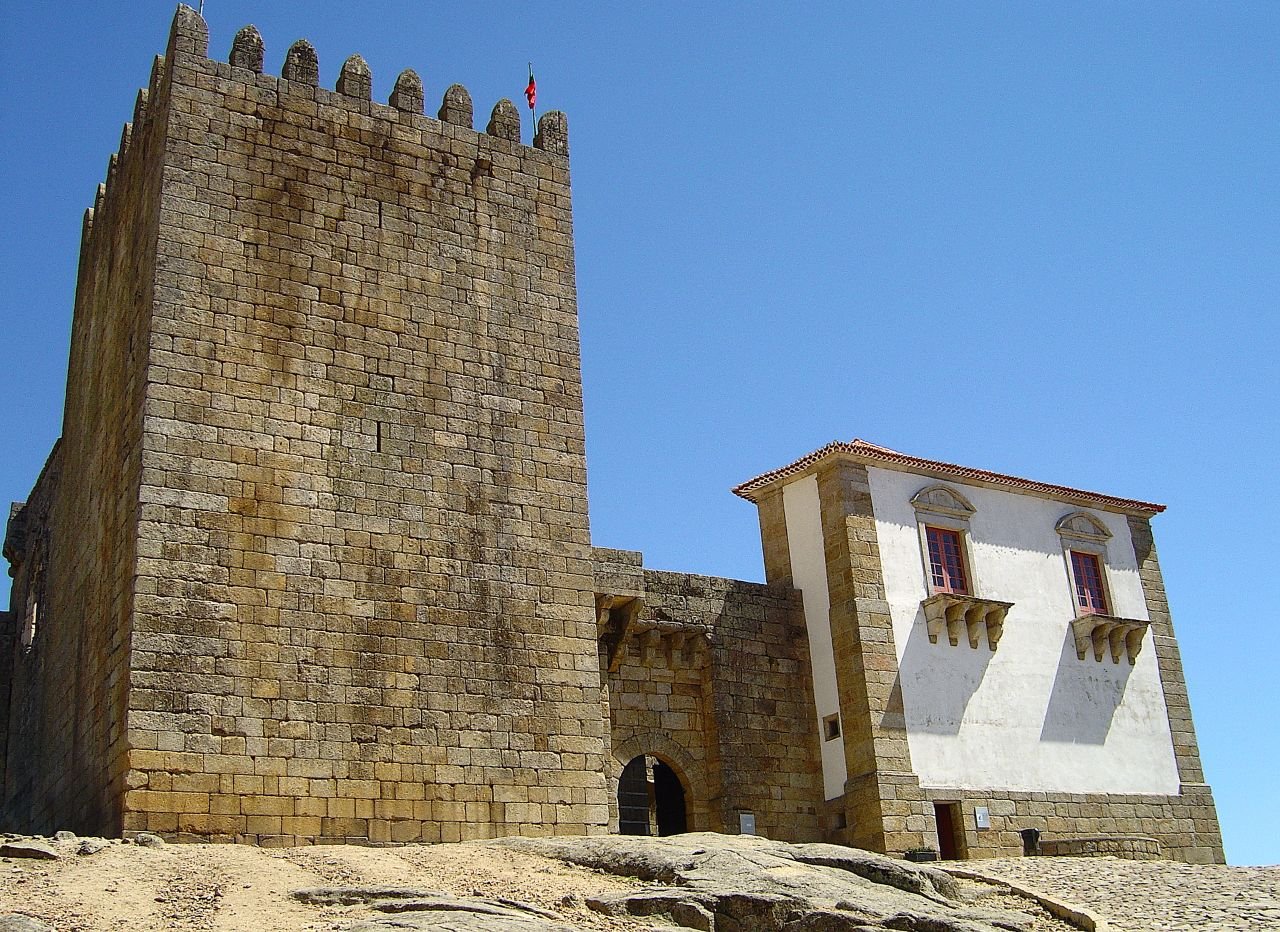
Belmonte could go unnoticed as another Portuguese village lost in the Beira Baixa region. But whoever travels through these lands will pass by one of the most important Portuguese villages, whose castle is inseparable from the history of Portugal.
It was there that Pedro Álvares Cabral, the famous navigator who would reach Brazil and make this enormous land known to Portugal, was born.
But if the navigator was born in the 15th century, Belmonte’s Castle is older, dating back to the middle of the 13th century during the reign of Dom Afonso III – the fifth Portuguese king.
The castle replaced an old fortification recorded from 1223, which, common at the time, protected a small population cluster. Its decline was accentuated after the treaty of Alcanizes in 1297, where the sovereign kings of León and Castle Fernando IV and the Portuguese king Dinis established peace in the territory by delimiting the border limits of both kingdoms.
But also, its geographical position did not help in its maintenance. Its proximity to the border was a step closer to having its walls and dwellings destroyed by the enemies, mainly during the dynastic crisis of 1383-1385.
The typical machicolation balconies of the architectural ensemble can be seen there and date back to the late 13th century and early 14th century. But it was in the 15th century, more specifically in 1466, that D. Afonso V donated the castle to Fernão Nunes de Cabral.
He undertook a major reconfiguration in the layout of the walls and ordered the construction of a residential area, turning the castle into a palace. However, in the 18th century, a violent fire destroyed a large part of the palace, ending its habitation.
The Cabral family left the castle for good and moved to the current Casa dos Condes. But even today, when visiting the castle, one can still see the Cabral family coat of arms, something one cannot remain indifferent to.
Of course, Belmonte has a lot more to tell, namely the important Jewish community that has lived there since the Middle Ages, but for now, the visits are for the castle, considered a National Monument.
Visiting hours: Tuesday through Sunday, from 9:30 am to 1:00 pm and from 2:30 pm to 5:30 pm. Closed January 1st, Easter Sunday, May 1st and December 25th
Price: 2 euros
5. Sabugal Castle
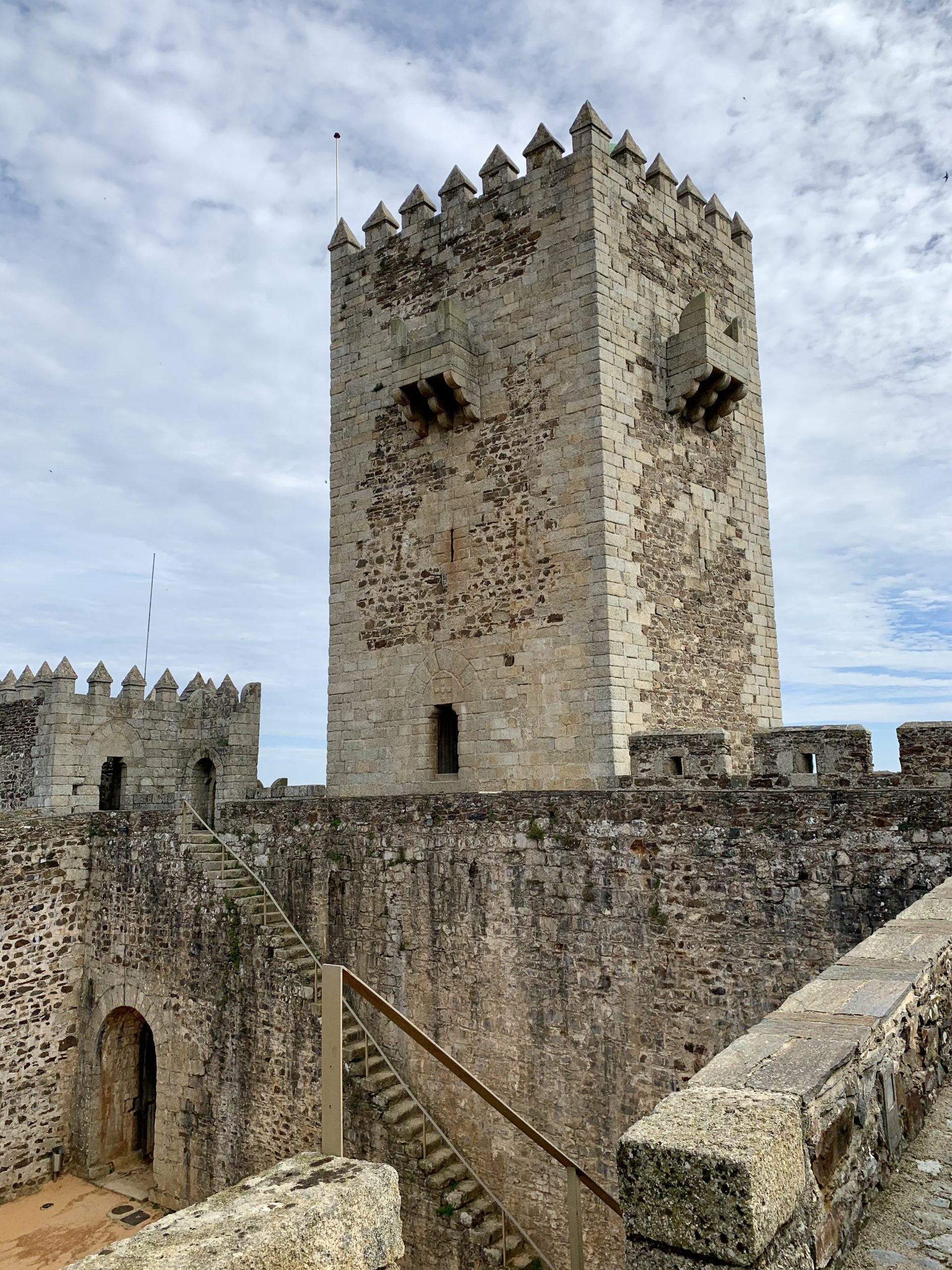
Last on our journey stands one of the best-preserved castles in Portugal, the Castle of Sabugal, whose majestic structure reveals its strategic importance in defending the borders of the Portuguese kingdom.
It was also occupied by King Dinis in the campaign of 1296. This castle was another reinforcement to strengthen the border and was ostentatious of its power during this period.
The castle’s completion took place in 1303, together with other defensive systems – Castelo Rodrigo, Almeida, Castelo Bom, Vilar Maior, Castelo Melhor, and Alfaiates. Also, in this one, we can see its tower keep 27 meters high, with machicolation balconies.
Use your imagination, and imagine yourself being the enemy under those balconies. You could be hit with arrows or boiling oil, a position that would not be at all the most desirable.
Nowadays, with no enemies in the tower, visitors can climb to the top of the building, if they don’t suffer from vertigo, and let themselves be enchanted not only by the castle but also by the surrounding landscape of one of the most beautiful places in Portugal.
Visiting hours: Open every day, from June to August, from 10 am to 1 pm and from 2 pm to 6 pm, and from September to May, from 9:30 am to 1 pm and from 2 pm to 5:30 pm.
Price: 2 Euros (includes a visit to the museum)


